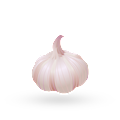MAIN INGREDIENTS
Lechon, derived from a Spanish word for roasted suckling pig is one of the most popular dishes in the Philippines. The slowly-roasted suckling pig is usually stuffed with lemongrass, tamarind, garlic, onions, and chives, and is then roasted on a large bamboo spit over an open fire.
It is traditionally served whole on a platter, at celebrations and festive events such as weddings and Christmas. Once the meat is properly roasted and falls off the bone, people tend to eat every part of the pig, and the crispy, reddish-brown, crackling skin is especially beloved.
MAIN INGREDIENTS
Kare-kare is a traditional stew consisting of meat such as tripe, pork leg, ox tail, goat or chicken, vegetables, and a thick, savory peanut sauce flavored with annatto seeds. Shrimp paste (bagoong) is often served on the side in order to enhance the flavors of the dish.
Kare-kare is traditionally cooked in a clay cooking pot known as palayok, and the vessel also acts as a serving bowl once the dish is properly cooked. Nowadays, it is often served at numerous Filipino festivities. Some believe that kare-kare has origins in the Pampanga region, while others claim that the name of the dish is derived from the Indian word curry, and that it was introduced to the Philippines by Indians from the Rizal province.
MAIN INGREDIENTS
Lechon kawali is the Filipino version of deep-fried pork belly. Primarily boiled in plain or seasoned water, the meat is rubbed with salt, cut into chunks, then deep-fried until it develops a golden-brown, crispy skin, but remains juicy and tender on the inside.
It is one of the most famous Filipino dishes eaten throughout the country. Always served hot, lechon kawali is usually accompanied by spicy vinegar sauce or a traditional lechon liver sauce on the side.
MAIN INGREDIENTS
Crispy pata is one of the most common Filipino dishes served on special occasions. It consists of a whole pork leg that is cooked until tender. It is then dried and deep-fried until golden brown and crispy. The leg is usually cooked alongside various spices such as bay leaves and peppercorns.
It is traditionally rubbed with a spice mixture before it is fried. Served sliced, it is often accompanied by pickled papaya and a tart sauce which combines vinegar, soy sauce, and a variety of spices.
Although undoubtedly French in origin, the decadent sans rival (lit. without rival) is a classic Filipino dessert and an all-time favorite that truly lives up to its name. It is made with layers of dacquoise; a crispy, baked nut meringue sandwiched together with the so-called pâte à bombe - a gorgeously smooth, velvety and rich French buttercream.
But unlike the French original, which is traditionally made with either almond or hazelnut meringue, the Filipino version uses toasted cashews instead. Sans rival is said to have been invented sometime between the 1920s and 1930s, when many Filipinos traveled to Europe to study, and upon returning home to the Philippines, they started employing some of the cooking and patisserie techniques they learned while studying abroad.
MAIN INGREDIENTS
Butsi balls are the Filipino version of traditional Chinese jian dui sweets. They are made with glutinous rice flour that is formed in small round shapes and stuffed with a variety of sweet fillings such as sweetened mung bean, creamy lotus, red bean paste, or shredded coconut.
Butsi are usually coated in sesame seeds and fried until golden. Even though they originated as a traditional Chinese delicacy, their Filipino adaptation has become incredibly popular. With their crispy shell, chewy texture, and creamy filling, they can be enjoyed as a satisfying dessert or a quick sweet snack.
MAIN INGREDIENTS
Silog refers to a group of Filipino dishes that are traditionally served for breakfast. The name is an abbreviation for sinangang at itlog, meaning fried garlic rice and eggs. The difference between each of these dishes is in the additional component that's served with the garlic rice and eggs, such as tapa (sliced meat), longganisa sausages, tocino bacon, bangus milkfish belly, chorizo, hot dogs, pork chops, Spam, fried chicken, or beefsteak, among others.
It is believed that the first type of silog was tapsilog, invented in the 1980s in Marikina City. These breakfast items are so popular that they can nowadays be found in fast food chains, hotels, and restaurants.
VARIATIONS OF Silog
MAIN INGREDIENTS
One of the most common breakfast staples in the Philippines is tapsilog, a plate which consists of sliced beef jerky, known as tapa, a heap of garlic rice, and a fried egg. It is believed that the dish grew out of necessity, to cater to the needs of many workers who were in search for a quick, cheap, and nutritious breakfast.
Eventually, tapsilog was incorporated on the menus of many Filipino fast food chains and specialized tapsihan eateries. Nowadays, it appears in numerous varieties, and even though it is still a favorite Filipino breakfast it can be enjoyed at any time of day or as a satisfying late night snack.
MAIN INGREDIENTS
The refreshing halo-halo (lit. mix-mix) is a summer dessert or a snack of mixed fruit and beans, topped with finely crushed ice and either milk or ice cream. Some of the most common halo-halo ingredients include bananas, jackfruit, coconut, sweet potatoes, red mung beans, chickpeas, sugar palm fruit, purple yam jam, leche flan, and - in recent times - even sweet corn or corn crisps.
Originally, halo-halo desserts were sold by Japanese vendors in halo-halo parlors or at numerous street stalls before the occupation of the Philippines in the 1940s. In fact, this Filipino specialty is often said to have been inspired by a shaved-ice cooler called anmitsu, another Japanese summer drink.
Silvanas are the snack version of a traditional Filipino dessert known as sans rival. These frozen cookie sandwiches are made with two cashew-meringue wafers that are held together with a thick layer of buttercream and are generously coated in cashew crumbs.
Although plain versions are the most common, silvanas occasionally come in various flavors such as chocolate, strawberry, mocha, or mango. Popular throughout the country, these cookies have to be refrigerated and are best served well-chilled or frozen.


































